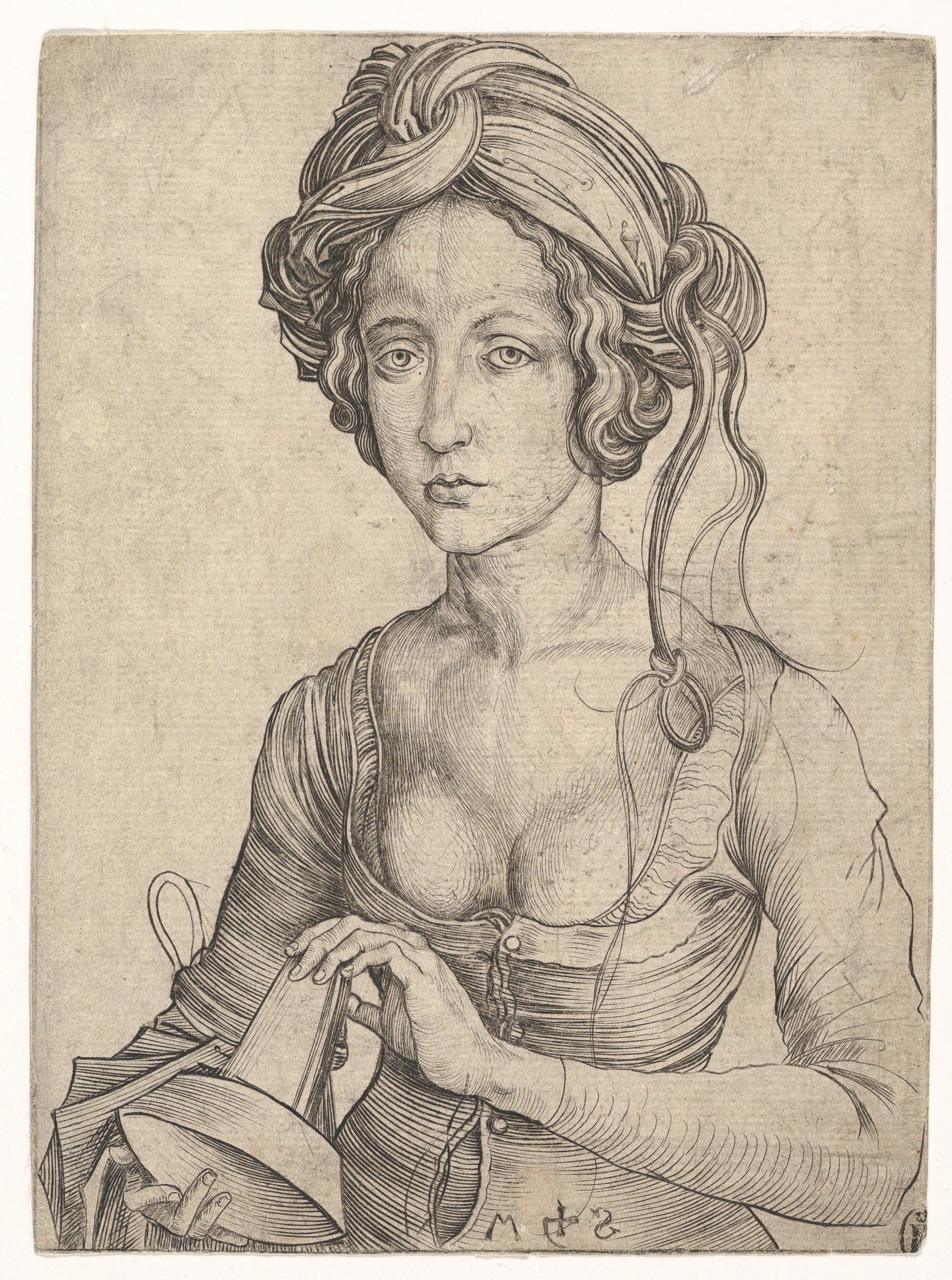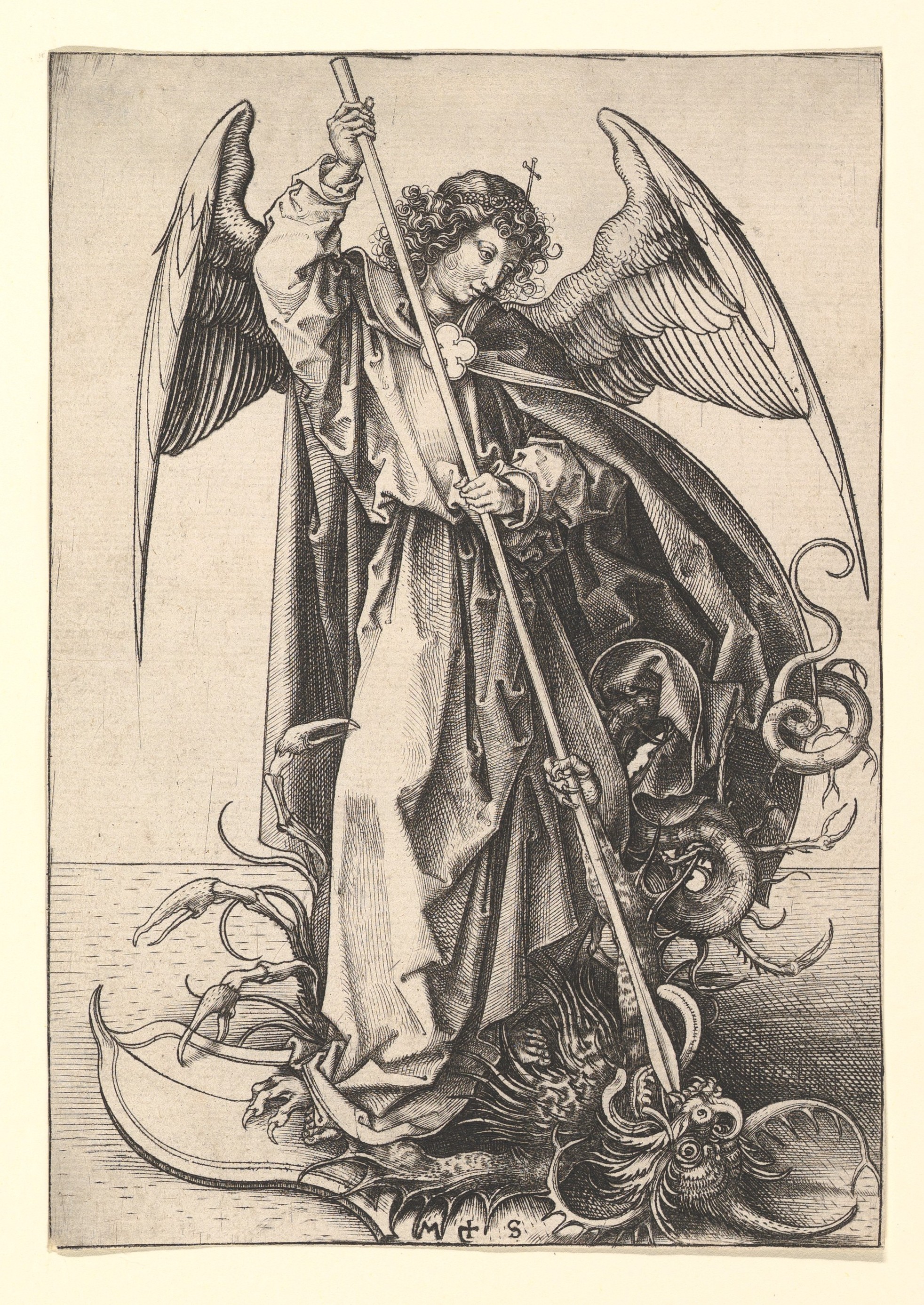Martin Schongauer was a German artist (1448-1491) whose body of work, engravings and paintings, was mainly reflective of Christian art created during the Northern Renaissance period. Schongauer was a master engraver and considered one of the best right behind Albrecht Dürer who was a follower of Schongauer's work (and was in fact on his way to visit him when Schongauer died). His style was distinctly Gothic.
Schongauer's The Foolish Virgin (1480) is an engraving in copper that shows his attempt to break away from the religious iconography that was so prevalent during this period. The biblical story of the "Parable of the Ten Virgins" provided subject matter for his engraving but his artistic interpretation does not show a saintly, pious woman but instead a sensuous woman with heaving breasts, hair slightly askew and a somewhat inviting expression on her face with eyes not looking down but directly into the eyes of the viewer.
Schongauer displays a desire to show this woman as a more human, less heavenly version, and succeeds in doing so, but clearly shows a different vision how women were portrayed in Christian art of that period.
- Heidi


 Martin Schongauer
Martin Schongauer